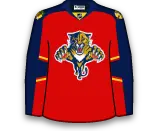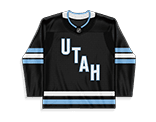Bickel has one assist and 46 PIMS in nine games with the Wild this season. He is unlikely to be claimed, so he will head to Iowa (AHL).

Bickel has one assist and 46 PIMS in nine games with the Wild this season. He is unlikely to be claimed, so he will head to Iowa (AHL).

Jordan, 24, is a solid offensive defenseman who has seen power-play time with the Hurricanes, but has failed to record a point in 16 games since his recall. If he clears waivers he will be sent to Charlotte (AHL), where he has two goals and five assists in 15 games.

Boychuk, 25, is a former first-round pick (14th overall in 2008) but hasn’t panned out as the Hurricanes would have hoped. He has six points (3G / 3A) in 31 games this season, so they have placed him on waiver with the intent of sending him to Charlotte.

Winnipeg has placed Brouillette on waivers with the intent to send him down to St. John’s. This move is likely good news on the injury front. Zach Bogosian has been practicing as of late and appears close to a return. Brouillette’s return to the AHL would make way for Bogosian to return tomorrow night in Arizona.

The Flyers recalled White from his conditioning stint with Lehigh Valley this morning, but have placed him on waivers this afternoon with the intention of sending him back to the AHL.

Allen has appeared in just five games with the Canadiens after being acquired from the Ducks. He missed an extended period of time with an illness, but has been a healthy scratch in the last five games.

Schlemko has one goal and three assists in 20 games with the Coyotes this season. He has also registered one goal and three assists in two games with Portland (AHL). The 27-year-old blue liner has 50 career points (9G / 41A) in 207 NHL games.

Hackett has not played this season because he is recovering from offseason knee surgery. He is obviously close to being healthy and the Sabres want to send him dow so he can start for Rochester since they have two capable goalies at the NHL level. The question now is will he clear waivers?

The move to place Paajarvi on waivers opens the door for the Blues to keep all three goalies (Elliott, Brodeur and Allen) on the roster together for the time-being. Paajarvi has one assist and a minus-2 rating in 10 games this season.

Injury and poor play have limited Heatley to just six games with the Ducks this season. He has no points and a minus-3 rating. The former 50-goal scorer has a rather inexpensive contract and it will be interesting to see if another team takes a chance on him.

Fraser, 24, has registered three goals in 24 games with the Bruins this season. Fraser is a big-body at 6-foot-1, 204 lbs. and plays a physical brand of hockey. As a corresponding move, the Oilers placed Steve Pinnoztto on waivers, so expect Fraser to slide into his spot in the lineup.

Fraser has three goals and a minus-5 rating in 24 games this season. They placed him on waivers in order to make room to recall Jordan Caron.

Roy has served as a healthy scratch in the last three games and has now been placed on waivers. He has 10 points (1G / 9A) in 26 games this season. It would be surprising if a team like Edmonton or another team in need of a veteran pivot does not claim Roy.

Stalberg has not played since October 25th because of a lower-body injury. Since signing a four-year, $12 million contract prior to the 2013-14 season, Stalberg has just eight goals and 10 assists (18 points) in 75 games with the Predators.

LaBarbera has not played since returning from a hand injury, so he has been placed on waivers with the intent of sending him to the AHL. Ilya Bryzgalov has been recalled from his conditioning stint, effectively ending LaBarbera’s run with the Ducks.

Nestrasil, 23, was the Red Wings third-round pick in 2009. He had two assists in 13 games with Detroit this season. He was also a member of the Calder Cup Champion Grand Rapids Griffins in 2013.

Connauton, 24, was Vancouver’s third pick, 83rd overall, in the 2009 NHL Draft. He has registered one goal and nine assists for 10 points with 22 penalty minutes in 44 career NHL games, all during the past two seasons with the Stars. He has collected 0-2-2 with six penalty minutes and is +4 in eight games this season.

Harding broke his foot in the offseason and was suspended by the team thereafter. Stay tuned to see if he is claimed by another team or simply sent down to the minors.
Schlemko had 1 point in 7 games this season for Arizona.

Schlemko has 1 assist in 7 games this season
